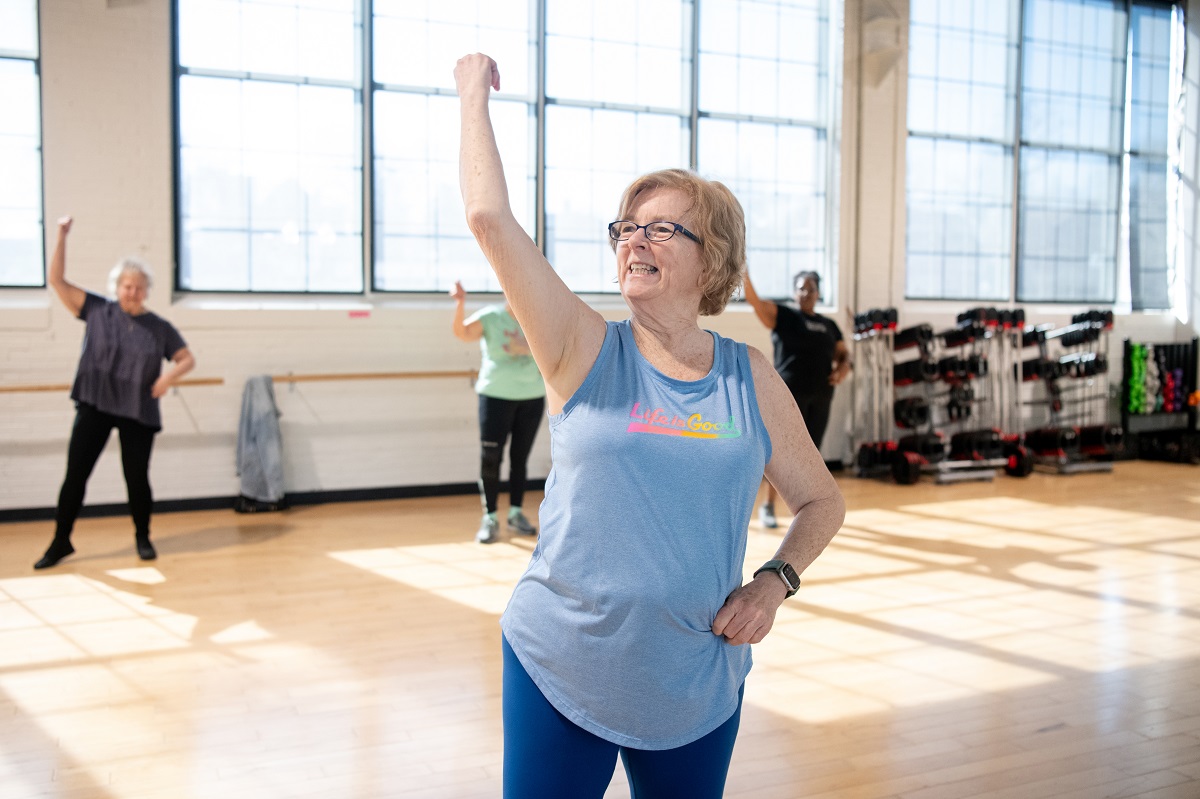The Medical Minute: Supervised exercise therapy eases symptoms of peripheral artery disease

Patricia Creque describes herself as “one of those people who has music in my head and am always ready to dance.”
Peripheral artery disease (PAD), however, had made it difficult for her to dance—or even walk.
“For years I had such issues with my legs,” said Creque, 69, of Wyomissing. “I had no idea what was causing the pain, but it affected my quality of life.”
Determined to find out what was going on, Creque researched possible causes of leg pain and read about PAD. When she learned it was caused by atherosclerosis, or hardening of the arteries, she began to connect the dots.
“I knew I had atherosclerosis, and I knew it had affected my heart, but I didn’t know it could also be causing the pain in my legs,” Creque said.
She consulted her primary care physician, who sent her to Penn State Health Vascular Surgery in Wyomissing. She learned that PAD is a common condition, affecting 5 to 6 million people in the United States. While some people with PAD are asymptomatic, others, including Creque, experience the classic symptom of leg cramping and pain with physical activity that gets better with rest.
“The pain from muscle cramping in the legs is always there when you walk, but as soon as you stop walking, it goes away,” said Dr. Ali Amin, a vascular surgeon at Penn State Health St. Joseph Medical Center. “That’s the difference between PAD and other types of leg pain.”
Cause and symptoms of PAD
Amin explained that atherosclerosis causes blood vessels to narrow, restricting blood flow to a person’s extremities—usually the legs. When blood supply is reduced, not enough oxygen and nutrients get to the muscles, especially during increased demand, such as walking, which results in pain.
Other symptoms may include pain in the foot while resting, discoloration of the feet or legs, numbness and cold feet. More advanced symptoms include ulcers of the foot or gangrene of the foot or toes, which may result in amputation. PAD also can lead to coronary artery disease, which could cause a stroke or heart attack.
“PAD can be a serious condition,” Amin said. “If you have leg pain only one day out of seven, that’s not peripheral artery disease. But if you have pain every time you walk, you should take it seriously and get checked.”
Benefits of supervised exercise therapy
Once Creque had been diagnosed with PAD, she was treated with balloon angioplasty to open up her narrowed arteries. Despite this, her pain persisted. Eager for solutions, she resumed her research and discovered Penn State Health’s supervised exercise therapy program. She contacted Spring Ridge Outpatient Center for more information.
Learning that she qualified for the program, Creque decided to enroll.
A clinical exercise physiologist with Penn State Health Spring Ridge Outpatient Center, Allison Cannon leads the supervised exercise program for PAD patients. Participants who are able are instructed to walk on treadmills, Cannon said, while anyone who has trouble accessing a treadmill is encouraged to participate in walking exercises on the floor.
Exercise is prescribed for PAD patients because it increases blood flow and improves circulation, which can ease pain. Patients may experience discomfort while walking, but it’s the best exercise for pain relief.
“We don’t want patients working to severe pain, but some discomfort is good because it means the blood is working to get through blockages and to the muscles,” Cannon said.
As they build up stamina and pain tolerance, patients are challenged to increase the distance they can walk on a treadmill. Creque, who said she could not tolerate much walking at all when she started the program, was able to accomplish three sets of 12 to 15 minutes on the treadmill by the end.
Program staff members observe patients, monitoring their vital signs, pain level, endurance, recovery time and the speed and elevation of the treadmill.
Cannon encouraged PAD patients who are interested in the program to consult with their provider about getting enrolled in a supervised exercise therapy program near them.
“It’s really rewarding to work closely with patients and see how much they improve by their last day,” Cannon said.
Any exercise is helpful for PAD
While supervised exercise therapy has been found to improve walking ability, overall function and health-related quality of life in patients with symptomatic PAD, patients who exercise on their own can also see improvements. Walking or using a stationary bike can increase blood flow to the legs, while swimming, yoga and stretching may improve overall circulation.
Amin advised patients to exercise as much as they are able, while also taking other steps to minimize their chances of developing PAD and lessening symptoms.
“Stop smoking, control your blood sugar and watch your cholesterol and blood pressure,” Amin advised. “Watch what you eat and exercise as much as you’re able to. You don’t have to go to the gym or have any special equipment. Just walk as much as you can.”
Back to dancing
Creque, who saw significant improvement in pain relief and movement after completing the supervised exercise therapy program, enrolled in a senior dance class at her gym. After several classes, she was asked, and agreed, to lead a Friday morning class.
“I never would have had the confidence to do that without the program,” she said. “I came out of it feeling much stronger—mentally and physically.”
Related Content:
- The Medical Minute: The warning signs, causes and treatments of peripheral artery disease
- The Medical Minute: Never had a lipid panel? Here’s why it’s important
The Medical Minute is a weekly health news feature produced by Penn State Health. Articles feature the expertise of faculty, physicians and staff, and are designed to offer timely, relevant health information of interest to a broad audience.
If you're having trouble accessing this content, or would like it in another format, please email Penn State Health Marketing & Communications.
